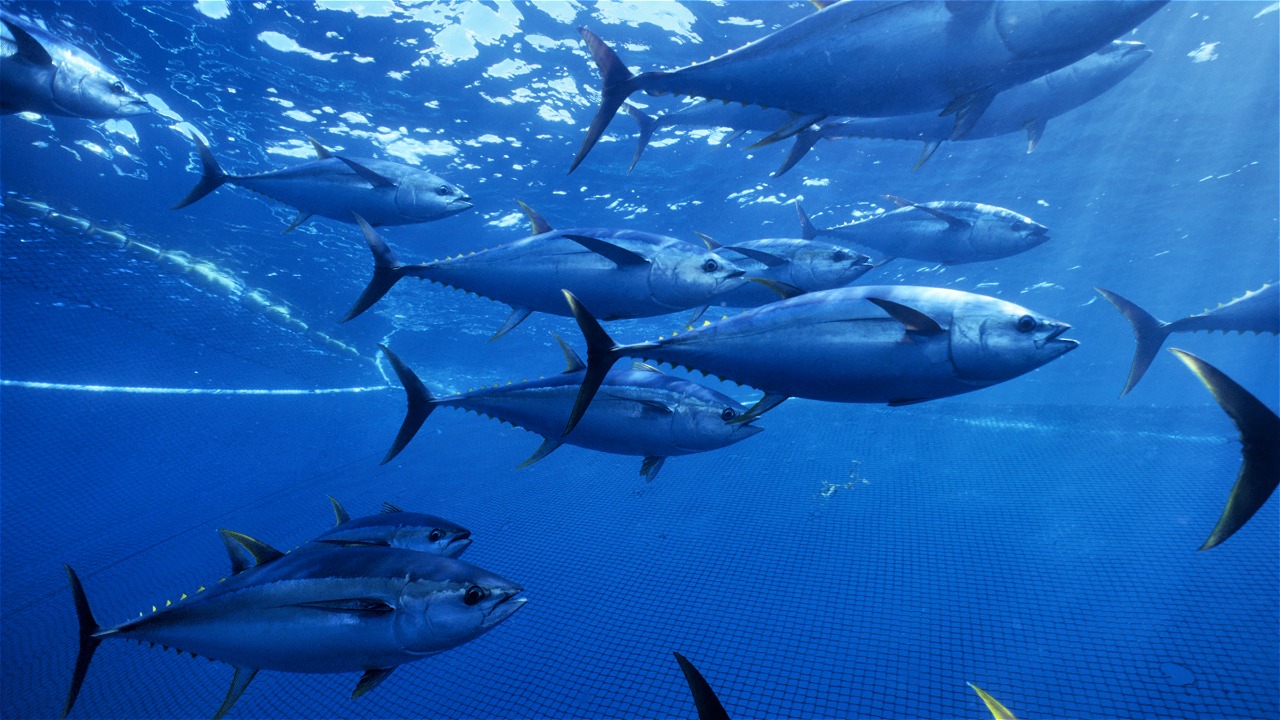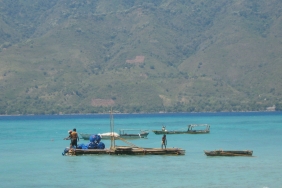THE CAPTURE OF A SINGLE JUVENILE TUNA DESTROYS MILLIONS OF OTHERS
by: Muhammad Yusuf
Have you ever wondered how many millions of tuna eggs in a mature tuna individuals? Not hundreds or thousands, it’s millions. Fecundity or the number of eggs in a single tuna individual is estimated by experts in between 1.5 to 5 million eggs. The type of tuna caught the most in Indonesia, yellow fin tuna or locally known as madidahang (yellowfin / Thunnus albacares) for example, reach maturity and lay eggs on 100-120 centimeters fork length or weight more than 20 kilograms.
Meanwhile, experts classify juvenile yellow fin tuna (baby tuna) with a size below 20 kilograms, which most likely has not had time to release their eggs into the nature. The scientific term for the juvenile tuna known as the maturity level of the gonads (Tingkat Kematangan Gonad/TKG), has not reached TKG four. Thus the catch of a juvenile tuna is potentially eliminating the birth of other tuna fish as many as millions of those individuals. What if the juveline tuna caught reach hundreds or even thousands of individuals?
The data obtained from WWF staff in Wakatobi since the year 2008-2011, shows the high catch of juvenile tuna by fishermen in Wakatobi that reached 2026 of tuna. The data was collected from the coordinators or tuna meat collectors for 4 years, each consisting of 7 persons (2008), 6 persons (2009), 3 persons (2010) and 8 persons (2011). Juvenile tuna can be determined from the weight of meat pieces of less than 10 kilograms, with an average of one tuna produced approximately 50% tuna meat. Only some of the coordinators record cuts of meat per individuals, so the data cannot be managed in complete of all of the catch or pieces of meat that are recorded by the coordinator. Here is a table of total juvenile tuna which were caught during the year 2008-2011.
|
Year |
Total of tuna |
Juvenile tuna |
% juvenile |
coordinator |
|
2008 |
2682 |
430 |
16 |
7 men |
|
2009 |
3451 |
902 |
26 |
6 men |
|
2010 |
766 |
406 |
53 |
3 men |
|
2011 |
1134 |
288 |
25 |
8 men |
|
Total |
8.033 |
2.026 |
25 % |
Based on the data collection for 4 years, the amount of tuna that can be calculated and separated between adult and juvenile size was 8033 individuals, with a number of 2026 individuals including the size of juvenile tuna. The average ratio of the number of juvenile tuna caught in Wakatobi is 25% of total catch. We can imagine that during the last 4 years in Wakatobi, an estimated of billions of yellow fin tuna eggs were not issued to the nature and failed to regenerate. This failure should be the concern of fishermen, collectors, and local governments to think and realize the comparison of capturing a juvenile tuna individual or waiting for millions of tuna fish individuals who may be born from adult tuna fish eggs. This data can be one of the policy considerations for not catching juvenile tuna.
The following graphical information is the trend of the catch of juvenile tuna in Wakatobi which tends to increase since the year 2008-2011.
Fig: Total of catched juvenile
Trends in the catch of juvenile tuna for 4 years from 2008-2011 has been 16% increasing in 2008, 26% in 2009, 53% in 2010, and 25% in 2011. A linear trend line has increased sharply. This trend may lead to growth overfishing when fishermen catch too many juvenile or small-sized fish, resulting in a reduction of fish stocks in nature.
Juvenile tuna fishing is caused by the fishermen in Wakatobi who conduct fishing practices around the surface of the water. This activity will actually harm the fishermen in the long run because the fish stock will decrease. Besides, pieces of meat under 10 kilograms cannot be categorized as good quality cuts of meat or grade A, and the price is certainly cheaper. Therefore, in accordance with the recommendation in the BMP Tuna Fishing WWF –Indonesia, tuna fishing should be conducted at over 100 m of depths, so the fishermen can get an adult size of fish and avoid the capture of juvenile tuna.
Contact: Muhammad Yusuf, Science and Fisheries Training Coordinator, WWF-Indonesia - myusuf@wwf.or.id
Notes:
WWF-Indonesia fisheries program have set up a line of program aiming to achieve sustainable fisheries, which include:
- Introduction and promotion of the Tuna fisheries Ecosystem Based Management (Tuna fishery-EBM) by 2012.
- Composing Better practices of Tuna and Reef Food Fish (RFF) fisheries for fishing and handling, aquaculture, which will also be able to drive the creation of fair business within its business chain of custody by 2013.
- Widening campaign on seafood guideline to consumers (e.g. individual, restaurants, hotels, major retailers) in 5 big cities by 2009.
This achievements and yet also challenges have been recognized by the support of USAID-CTSP, WWF-Netherland, WWF-Denmark, WWF-US, DANIDA (Danish International Development Agency), Packard Foundation, Crown Foundation, AAGE Foundataion, Oak Foundation, Oxfam Novib.





